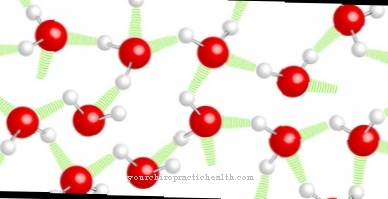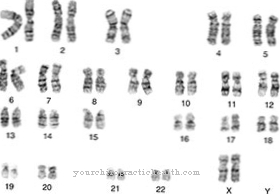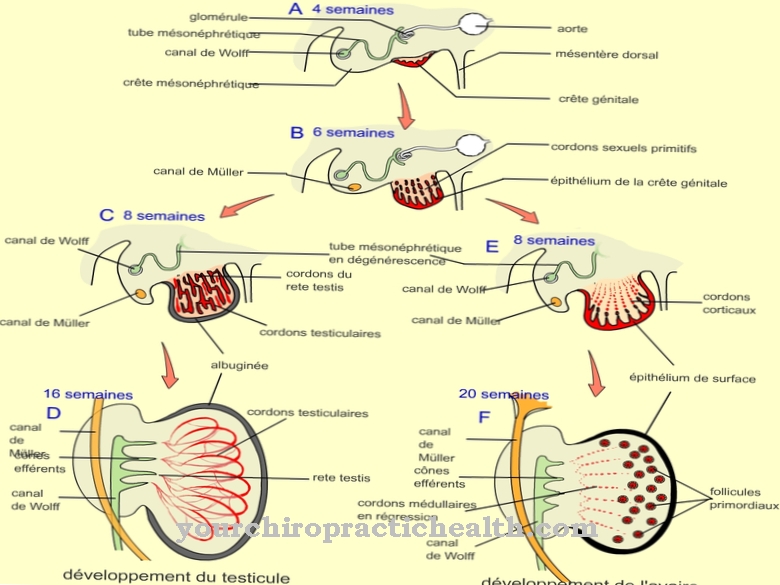The osmotic red blood cell resistance is a measure of how strongly the membranes surrounding the erythrocytes withstand an osmotic pressure gradient. An osmotic partial pressure arises on the semipermeable membranes of the erythrocytes when they are surrounded by a saline solution that is below their own (physiological) salt concentration of 0.9 percent. The red blood cells take up water through osmosis, swell, and those that are most likely to burst have the lowest osmotic erythrocyte resistance.
What is osmotic erythrocyte resistance?

Aqueous solutions with different concentrations of the dissolved substances develop an osmotic pressure gradient when they are separated from one another by a semipermeable membrane. Substances from the solution with the higher concentration tend to migrate into the solution with the lower concentration in order to compensate for the concentration gradient. If the permeable membrane is difficult to pass through for the mostly larger substance molecules, for example NaCl (table salt), the small water molecules (H2O) move from the weak to the stronger solution instead.
In the case of erythrocytes, which are also surrounded by a semipermeable membrane, the same effect occurs via osmosis. If erythrocytes, the red blood cells, are surrounded by a saline solution, the concentration of which is below that of their own cytoplasm of about 9 percent (hypotonic solution), an osmotic partial pressure gradient occurs. This means that water from the surrounding solution enters the erythrocytes via osmosis, since the salt molecules can only pass the semipermeable membrane to the outside with great difficulty.
The erythrocytes swell due to the ingress of water to the point of bursting, a process known as hemolysis. The speed with which the erythrocytes expand and burst when they are surrounded by a saline solution with a defined concentration is a measure of their osmotic erythrocyte resistance. The shorter the time it takes to burst, the lower its osmotic resistance.
Function & task
Osmotically regulated exchange of substances between the erythrocytes and the surrounding blood plasma plays one of the main roles in the exchange of carbon dioxide for oxygen and oxygen for carbon dioxide in the capillaries.
The nature of the semipermeable membrane that surrounds the erythrocytes is of particular importance. A change in the composition of the membrane affects the osmotic exchange of substances and the functionality of the red blood cells. A change in the composition of the cell membrane can lead to a decrease or an increase in the permeability of the membrane. Both phenomena can have a detrimental effect on the functionality of the erythrocytes.
Indirect evidence of the nature of the membranes and the osmosis capacity of the erythrocytes is provided by their osmotic resistance, which can be measured using special methods. For example, about twenty test tubes are prepared with saline solution in increasing concentrations up to an isotonic concentration of 0.9 percent. A few drops of blood are dripped into each test tube and left to stand. After 24 hours, a slight red coloration of the solution shows the concentration within which the first dissolution of the red blood platelets took place.
In the test tubes with the less concentrated salt solutions, the red color becomes stronger because a larger proportion of the erythrocytes has burst and the escaping hemoglobin has mixed with the salt solution. The test tube in which no sediment of erythrocytes has formed corresponds to the one with the concentration below which all erythrocytes have been lysed.
The reference values for erythrocyte lysis beginning within 24 hours are a saline concentration of 0.46 to 0.42 percent. The values for a complete lysis of the erythrocytes after 24 hours are in the range 0.34 to 0.30 percent in healthy people.
In hemolytic anemia and so-called spheroid cell anemia, the determination of the pathologically reduced osmotic erythrocyte resistance plays an important role as a diagnostic tool. For the diagnosis of other hemolytic diseases, such as the hereditary diseases thalassemia, sickle cell anemia and others in which the osmotic erythrocyte resistance is increased, the determination of the resistance plays a less important role, since better diagnostic options are available for these specific clinical pictures.
Illnesses & ailments
One of the most well-known diseases associated with an increase in osmotic erythrocyte resistance is thalassemia. It is a hereditary disease that occurs in many variants with a mild and severe course and is based on genetic changes. The most common variant is beta thalassemia. Interestingly, the causative genetic defects are particularly common in southern Europe, the Arab countries and sub-Saharan Africa, the classic malaria regions. Presumably because thalassemia gives sufferers advantages in overcoming malaria.
Thalassemia shortens the lifespan of the red blood cells, so that the body has an increased production rate to compensate for this, which can be life-saving in cases of malaria due to the accelerated supply of newly produced erythrocytes. The low survival advantage that people with thalassemia have over certain forms of malaria has favored the genetic defects in the malaria regions from a population-genetic point of view and led to a slight genetic drift.
Sickle cell anemia is another hereditary disease associated with increased osmotic red cell resistance. It is triggered by genetic defects that lead to defective hemoglobin, the so-called sickle cell hemoglobin, which, because of the fibers it contains, leads to clumps and blockages in the veins.
Anemias caused by iron deficiency also lead to an increase in osmotic red cell resistance. They can be caused by excessive blood loss as a result of an injury, by a blood formation disorder or by excessive breakdown of the red blood cells.
The so-called spherical cell anemia is also hereditary and manifests itself as a reduction in the osmotic erythrocyte resistance, since the normally flattened and concave erythrocytes assume a spherical shape due to an incorrectly formed cytoskeleton and are already damaged in the spleen towards hemolysis.























.jpg)

.jpg)


